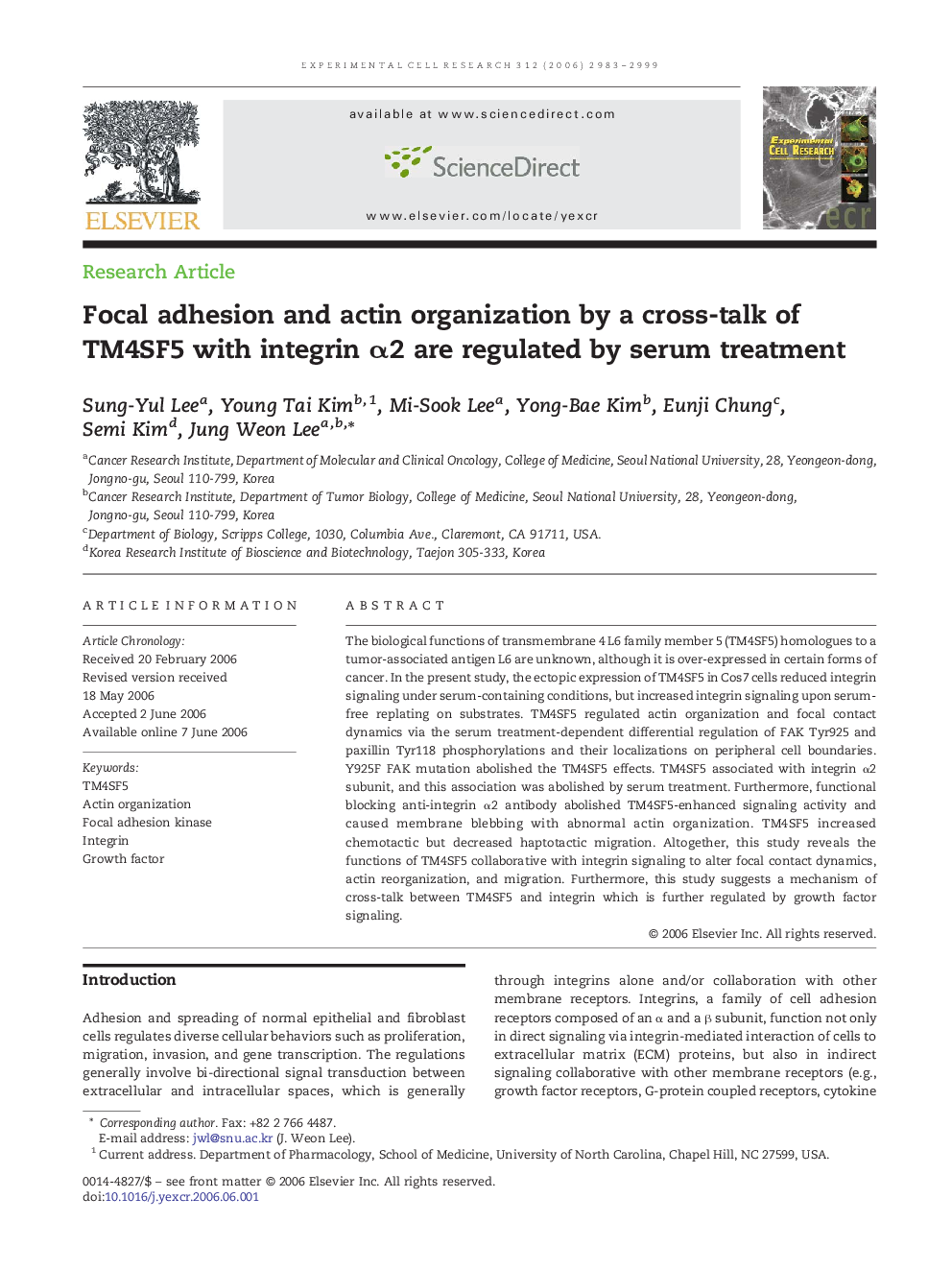| Article ID | Journal | Published Year | Pages | File Type |
|---|---|---|---|---|
| 2132425 | Experimental Cell Research | 2006 | 17 Pages |
The biological functions of transmembrane 4 L6 family member 5 (TM4SF5) homologues to a tumor-associated antigen L6 are unknown, although it is over-expressed in certain forms of cancer. In the present study, the ectopic expression of TM4SF5 in Cos7 cells reduced integrin signaling under serum-containing conditions, but increased integrin signaling upon serum-free replating on substrates. TM4SF5 regulated actin organization and focal contact dynamics via the serum treatment-dependent differential regulation of FAK Tyr925 and paxillin Tyr118 phosphorylations and their localizations on peripheral cell boundaries. Y925F FAK mutation abolished the TM4SF5 effects. TM4SF5 associated with integrin α2 subunit, and this association was abolished by serum treatment. Furthermore, functional blocking anti-integrin α2 antibody abolished TM4SF5-enhanced signaling activity and caused membrane blebbing with abnormal actin organization. TM4SF5 increased chemotactic but decreased haptotactic migration. Altogether, this study reveals the functions of TM4SF5 collaborative with integrin signaling to alter focal contact dynamics, actin reorganization, and migration. Furthermore, this study suggests a mechanism of cross-talk between TM4SF5 and integrin which is further regulated by growth factor signaling.
